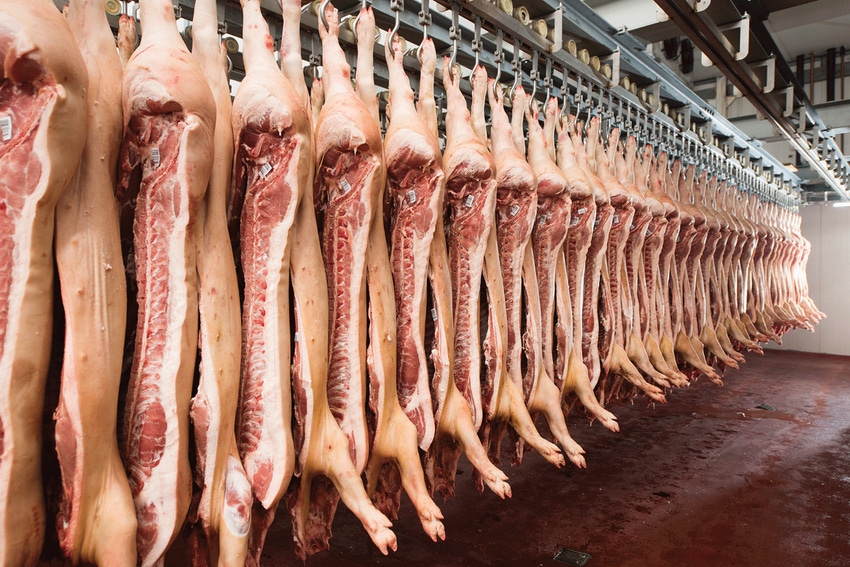An early outline of where ‘new management’ plans to lead an evolving North American Meat Institute.
March 29, 2019

The Meat Industry Hall of Fame inducted the Class of 2018 at the International Production & Processing Expo in February. Keynoting the event was incoming North American Meat Institute (NAMI) president and CEO, Julie Anna Potts. I was curious to learn more about her. It was one of her first public appearances after taking the reins from the retiring Barry Carpenter, for the past half century one of the most influential men in the meat industry. It was a tall order asking someone new to the meat and poultry industry to fill an incredibly large pair of old, familiar and well-worn boots.
She spoke eloquently and well but her 20 minutes passed so quickly it seemed more like a Twitter feed. Her speaking time, a quick synopsis of where she thought NAMI was today and where it should be going tomorrow, was way too short for the breadth and depth of the message she wanted to communicate.
Because the induction ceremony was my last official function as president of the Hall of Fame, I first thanked her for her great keynote. It made my retirement all the more pleasant but bittersweet and I want to thank Rosemary Mucklow, NAMI’s director emeritus, for urging that Potts be invited to speak. The second request I made was to ask Potts to elaborate on her keynote.
“Tell me what you really think,” I asked and then said she could take all the space she needed to spell out where she wanted to take the most influential meat association in North America. What are her goals? What stumbling blocks does she foresee?
She took some time to respond; time needed to carefully craft what she wanted to say. A first draft came and went. “It wasn’t me. I wanted to make it better,” she said.
And she did. Here is her response to an extremely open-ended question. She covers a lot of territory in a relatively short space. It serves as an early outline of where ‘new management’ plans to lead a venerable old organization.
Q. The meat industry finds itself at an important inflection point – one that presents both challenges and opportunities. On the one hand, how do we address consumers’ strong desire for animal protein as part of the overall trend to eat more healthfully, more sustainably, and to know more about how one’s food was produced? On the other hand, how do we engage in the global dialogue about the importance of meat in the human diet when many of the critics seem to advocate the elimination of meat production? And, by the way, what does “sustainably” actually mean?
A. At NAMI, we are working on strategies to balance these needs for the industry. One such effort is NAMI’s Task Force on Trust in Animal Protein, which has committed to putting together a long-term program to engage with consumers on their questions about meat and its production. People who enjoy delicious, wholesome meat need us in the industry to help them feel good about eating it! Importantly, touting the significant improvements the meat industry has already made in areas of food safety, worker safety and animal handling must go hand-in-hand with commitments to continuous improvement in other areas such as human health and the environment. To do this effectively as an industry, we must redouble our efforts to improve collaboration, build and maintain alliances across the food and agriculture sectors and leverage the resulting network to communicate with consumers in credible, transparent ways.
NAMI’s Task Force on Trust in Animal Protein can provide such a forum where best practices are shared, diverse voices and interests are heard and connections among companies and individuals are strengthened. Through this task force, and sustained conversations, the industry will be well-positioned to establish and realize a new, bold vision for the way we conduct business and reach consumers.
Take, for example, the issues of environmental stewardship and sustainability. Consumers, rightly, are concerned about the pace of climate change, and addressing those concerns in the context of animal agriculture is part of our responsibility as an industry. As I’ve traveled around the country and met with companies, both large and small, I’ve learned more about the many initiatives that are already underway to simultaneously reduce the industry’s environmental footprint and communicate its important contributions to sustainability.
This task force can help provide an avenue to show consumers the ongoing work that has resulted in the U.S. meat industry contributing the lowest percentage of greenhouse gas emissions in the world – only 4% – while producing more meat and poultry, using fewer animals, less land and less water than ever before. It can also ensure that conversations about ways to continually improve environmental practices and standards remain at the fore, and that companies looking for new strategies and ideas have access to resources and expertise to implement their own initiatives.
In short, the industry, through this task force and similar collaborative efforts, will be equipped to better respond to concerns or challenges raised from consumers, the media and others. At the same time, the industry, because of this increased coordination, can boost efforts to proactively and consistently communicate with consumers to build that trust in our products and production practices. These dual goals of enhancing industry collaboration and building and maintaining consumer trust are not mutually exclusive – they can and should be pursued concurrently. If we listen to, learn from and communicate credibly with each other and our customers, we can develop that trust, and in turn, overcome our greatest challenges and seize new opportunities.
About the Author(s)
You May Also Like


.png?width=300&auto=webp&quality=80&disable=upscale)
